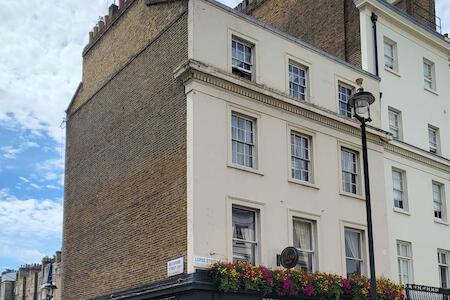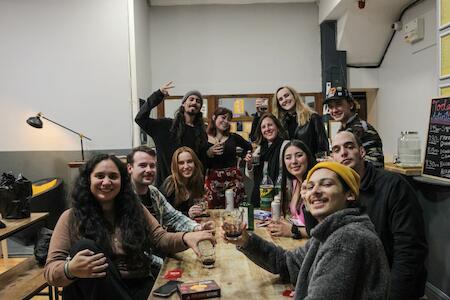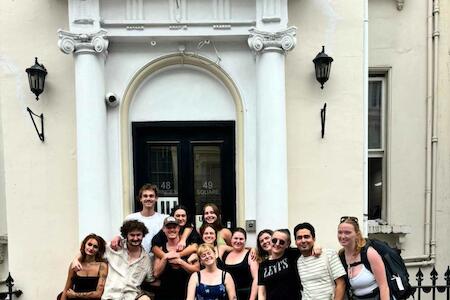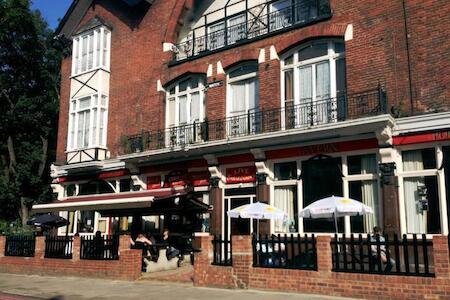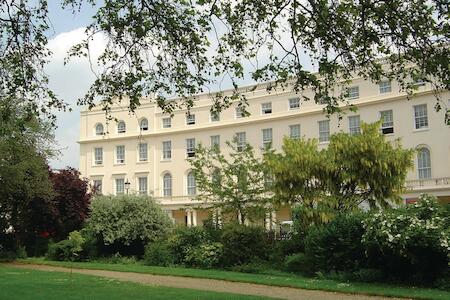Skyscrapers & Quiet Nights: The Docklands
If your picture of London is all old palaces and cobblestone streets, get ready for a surprise. Canary Wharf and the Docklands area is the other side of London—a futuristic world of towering skyscrapers, clean streets, and wide-open waterways. It's modern, impressive, and a totally different kind of cool.
Choosing to look for hostels in Canary Wharf and Docklands is a move for a traveler who wants a unique experience. You get to live in the city's spectacular financial hub, enjoy surprisingly peaceful nights, and still have fast, easy access to all the classic sights.
The Vibe: Clean, Modern, and Surprisingly Calm
Walking around Canary Wharf feels like stepping into the future. The architecture is stunning, with giant glass towers reflecting the sky and water. The area is built around the old docks of London, so you're always surrounded by calming water. It's clean, organized, and feels very safe.
Here’s the secret: while it's a bustling business hub during the day on weekdays, it becomes incredibly quiet in the evenings and on weekends. This means you can have a hectic day of sightseeing in central London and come back to a peaceful base for a great night's sleep.
Getting Around: Your Futuristic Ride to the Center
Don't let the East London location fool you; the transport here is fantastic and modern. The Jubilee Line on the Tube is one of the fastest lines, getting you to London Bridge (near The Shard and Borough Market) and Westminster (Big Ben) in no time.
You also have the DLR (Docklands Light Railway). This is a cool, automated train that glides above the ground, weaving between buildings and over the water. It’s a scenic ride that connects you to places like the Tower of London (at Tower Gateway station) and Greenwich.
Free Things to See and Do
The best parts of the Docklands are free. Your main activity is just walking around and admiring the incredible modern architecture. There are waterside paths everywhere, perfect for a stroll. Don't miss the Crossrail Place Roof Garden, a beautiful and peaceful public garden nestled on top of the Canary Wharf station—a true hidden gem.
You absolutely must visit the Museum of London Docklands. It's a fantastic (and free!) museum inside a historic warehouse that tells the amazing story of this part of the city. It's one of the best museums in London.
A Traveler's Tip: Ride the DLR Front Seat
Here’s a fun tip you have to try. The DLR trains are driverless. If you can, try to get the very front seat of the train. You'll get an amazing view that feels like you're on a rollercoaster, seeing the city from a unique angle as you travel between the skyscrapers. It’s a simple, free thrill.
Why Bunk in Canary Wharf and the Docklands?
Finding a hostel in this part of London is a savvy move for a traveler who appreciates a different kind of vibe. It’s a unique experience that combines impressive modern sights with a relaxing atmosphere and great connections.
- A Unique London Vibe: Experience the city's stunning and futuristic financial hub up close.
- Peace and Quiet: Enjoy calm and quiet evenings and weekends, a rare luxury in a huge city like London.
- Excellent Modern Transport: Get to all the central sights quickly on the fast and reliable Jubilee Line and the scenic DLR.
- Great Free Attractions: Explore the fantastic Museum of London Docklands and the beautiful Crossrail Place Roof Garden.
Hostels in Canary Wharf and Docklands offer a brilliant and unconventional base for your London adventure. It’s the perfect choice for a traveler who wants to see more than just the historic side of the city. You get to experience a modern, clean, and peaceful neighborhood with amazing architecture and super-fast links to everywhere you want to go.
